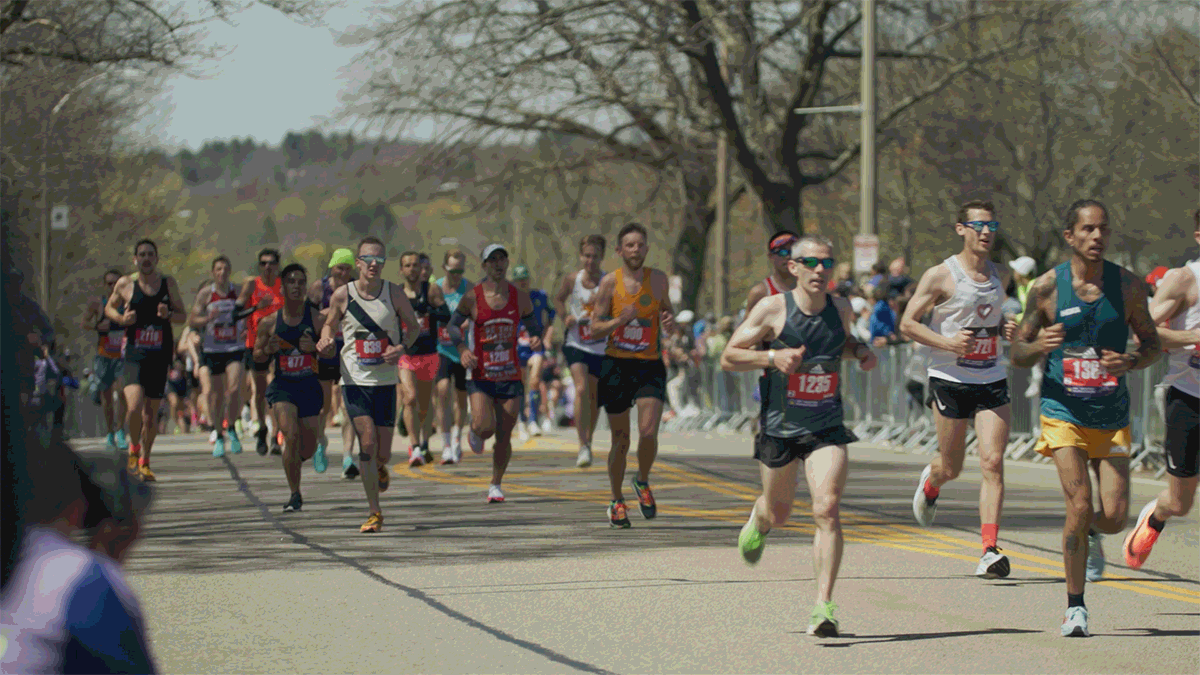
How I Ran Sub-3 in Boston
By: Team ENGO
How I Ran sub-3:00 in Boston with ENGO
Like most competitive runners, the Boston Marathon has served as my North Star. Early on I built my running career around qualifying for that race. After gaining the competency and experience that helped me earn multiple race bibs, my attention shifted from not simply getting my BQ, but attaining specific performance goals.
For me, my holy grail became the elusive 3:00 hour barrier. Historically this has been the time that signifies you’re a “real” road runner, achieved by only 4% of those who toe a marathon starting line.

Could Technology Help?
Preparing for my 7th Boston Marathon I decided to run with the new ENGO Eyewear. From the outside, they look like your typical sports glasses. However, from the athlete’s perspective, ENGO’s are a true game-changer, displaying real-time performance information directly into your field of view.
After pairing the ENGO glasses to my Garmin running watch, I personalized the data streams that I wanted to see. For me these were the vital 3: pace, heart rate and elapsed time.
Experimenting with the ENGO Eyewear during training, the experience was transformative. For the first time, I was able to monitor my key metrics while executing variable pace workouts, like the fast finish long long run. Never before had my speed management been so precise.
But would ENGO Eyewear be as useful and effective during the event?

My Race Blueprint
The Boston Marathon presents a number of challenges including its occurrence early in the season, relentless headwinds and a unique series of hills that can disrupt a runner’s rhythm.
I was particularly interested in how ENGO Eyewear could help guide my pacing strategy as I coped with the rolling terrain.
As mentioned, my goal time was 3 hours, which equates to an average speed of approximately 6:50 per mile. However, because of the locations of various climbs and descents along the course, trying to maintain this pace per mile throughout the entire race is a fool’s errand.
Instead, I broke the course into 4 segments, and devised a custom pacing plan for each. It looked like this:
0 – 10 km: Goal pace: 6:35/mi
The race immediately begins with a descent of 300’ within the first 10 km. This is an opportunity to get ahead of schedule and put “time in the bank,” as long as intensity is kept under control. Seeing my speed and heartrate presented in real-time allowed me to throttle my effort while running ahead of goal pace without too much cost. So far, so good!
10 km – 25 km: Goal pace: 6:40/mi
With the early descent behind me, I now settled into “cruising speed”. The density of runners begins to thin, providing space to concentrate on form and fueling. ENGO’s stream of data allowed me to relax and flow, without worrying about whether I was on pace. I nailed my objective of passing through the halfway point at 1:27:30.
25 km – 35 km: Goal pace: 6:55/mi
Now we enter the business end of the race! This critical section from mile 16 – 20 includes the infamous Heartbreak Hill, which is actually a series of 4 steps over which 190’ of elevation is gained. Usually you’ll have headwinds, too. My race plan anticipated that I’d slow during this segment so, as I monitored my heartrate with ENGO, I wasn’t alarmed at my first significant drop in speed. Focusing on my running mechanics, I grabbed a gel at the top and prepared for the final dash to the finish.
35 Km – Finish: Goal pace: 7:00/mi
By this point the accumulated fatigue often makes these last 6 miles the slowest and toughest of the race. This might seem strange since it’s a net descent of 125’ to the finish line. However many find these last few downhill miles to be excruciating. Seeing my pace right there in my field of view -- without having to break stride to look at my watch – was amazing! I was pleasantly surprised to have averaged a pace slightly faster than my goal during this last challenging section.
Mission Accomplished
I was able to beat my 3-hour time goal by posting a final time of 2:58:32. Woo hoo!
Looking back on how I accomplished this, my training was consistent and injury-free. My race-day fueling was spot on. But I also must credit ENGO Eyewear, which enabled me to execute a rather complex pacing plan.
ENGO’s data display helped me to subtly govern my efforts and avoid wasting energy, while keeping my changes of pace on track. ENGO also bolstered my confidence, and made it easier to stay on plan, even when other runners surged past me or when I encountered those inevitable rough patches in the race.
Experiencing the power of having your most important performance data presented in real-time directly in my field of view has changed forever how I approach training and racing. It’s always more fun when you exceed your goals… and ENGO Eyewear helped make that possible for me in the Boston Marathon.